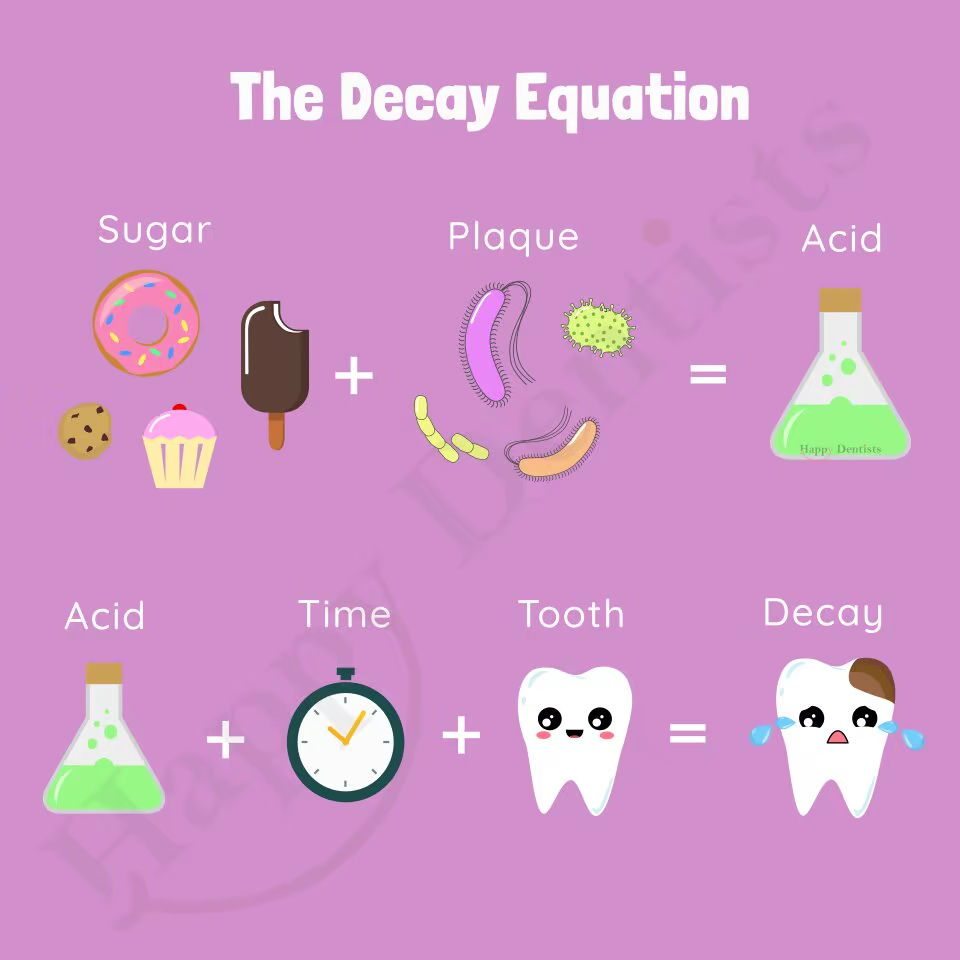Pulpitis Progression
If caries/decay starts to progress towards the pulp, you can
have a condition called reversible pulpitis. This is when
the pulp tissue is mildly inflamed. If caught early and
treatment performed, it can allow time for the pulp to
return to a non-inflamed condition (Relatively Healthy
Pulp).
If you leave caries to progress after the signs from
reversible pulpitis, you then get a condition called
irreversible pulpitis which can be extremely painful. When
left to continue you then get pulp necrosis which is where
the pulp tissue dies. Once there is no pulp tissue, there is
nothing protecting the inside of the tooth anymore and it
allows bacteria and the caries to progress further to the
tip of the nerve resulting in apical periodontitis. Once at
the tip, it can then start to cause an abscess (collection
of pus) and then spread to the face (cellulitis) and then to
the rest of the body.
Pulpitis Progression Analogy
See Illustration Above
Pulpitis Progression is like the progression of a house
fire. Where by the fire is the plaque imbalance/infection.
The smoke alarm is the nerve of the tooth and the fire
brigade is the dentist.
Imagine you are cooking and have become distracted leaving
the room. A fire has started, and the smoke alarm has gone
off alerting you to the stove. You call the fire brigade
they come and put it out. The pan and some of the walls are
now burnt. A little bit of damage but it is fixable because
you caught it early. This is similar to reversible pulpitis,
usually in that case a filling usually works.
Say you ignored the first couple of smoke alarm sounds, now
the second smoke alarm has kicked in. It is louder and even
more irritating this is like irreversible pulpitis. Say you
have ignored that one too. Now the alarm has melted from the
flames, and it is no longer being annoying (this like pulp
necrosis). So, you forget about it until you notice smoke
coming from the room (this is just like noticing a small
swelling in your mouth). You come into the room and now half
the house is on fire. You call the fire brigade who come and
help put it out. As a result, you have lost some of your
house structure. In these situations, you require either
root canal treatment or tooth removal. Which depends on the
extent of damage.
Say you have ignored all the alarms and smoke. But now you
can see the flames and feel the heat. You notice that it is
spreading to neighbouring houses and the bushland. You need
to contact the fire brigade as soon as possible. As the fire
can now cause serious issues elsewhere. These situations
require urgent dental treatment, possibly antibiotics and
hospitalisation.


















